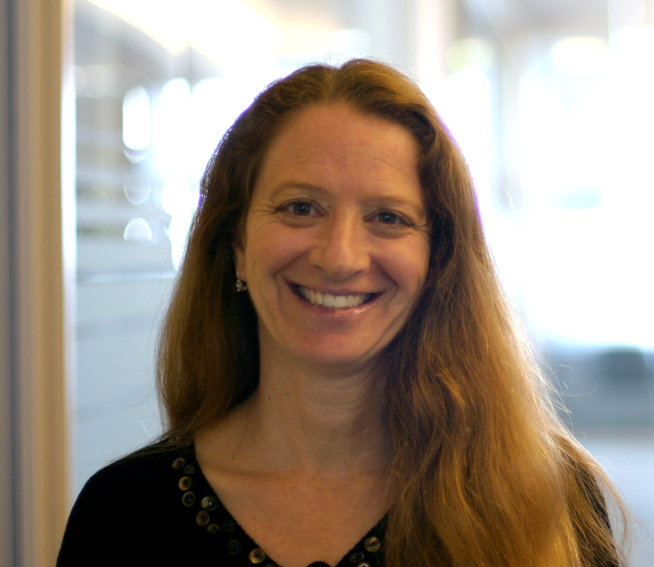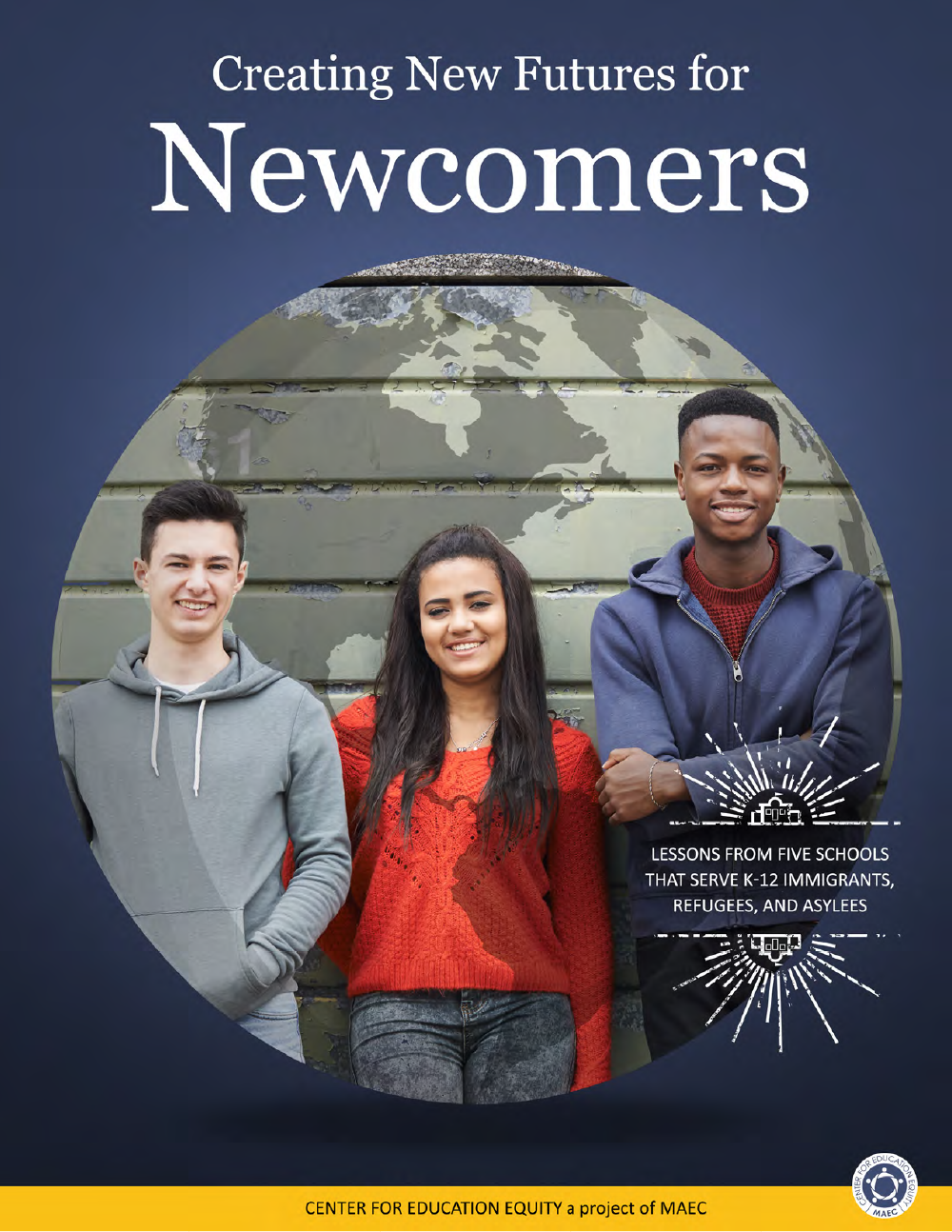Creating New Futures for Newcomers: Q&A with BethAnn Berliner
Posted on

About 44.4 million immigrants resided in the United States in 2017. Today, immigrants account for 13.6 percent of the population.
In this Making a Difference post, we feature a Q&A with Senior Researcher for WestEd, BethAnn Berliner, lead author of a recent report, Creating New Futures for Newcomers: Lessons from Five Schools that Serve K–12 Immigrants, Refugees, and Asylees.
This report highlights “bright spots,” or schools that are using promising and effective strategies for supporting newcomer students in K–12 classrooms. The report, developed through a partnership between MAEC and WestEd, presents fresh ideas that can benefit all educators, especially those who work with immigrant and refugee students.
To begin, BethAnn, how do you define a newcomer student?
BethAnn: Newcomer students are recently arrived immigrants, refugees, and asylum seekers to the U.S. who attend our local schools. They bring a range of languages, cultures, school experiences, literacy skills, and immigration circumstances to classrooms. Many speak little or no English; they may not read or write in their native languages; and they often have big gaps in their K–12 education, or never attended school before they arrived. Some come with families and others are unaccompanied minors. Some come with legal protections and others don’t have them. All have deeply personal stories of leaving — or fleeing — their homeland to escape crushing poverty, violence, political chaos, and other terrible circumstances.
As you know, the U.S. is currently home to a large immigrant population that’s nearly 45 million people and about 14 percent of our total population. And among them are a lot of K–12 students. There’s an urgency to educate them, not just because of their numbers or their legal right to a free, public education, but because they’re becoming new Americans, and gave up everything that was familiar to rebuild a life here that promises a more hopeful future. That starts with an education, gaining knowledge and skills, and experiences and relationships, to fulfill that promise.
To follow up, what’s a newcomer school? Are there a lot of them, or just a few?
BethAnn: By newcomer schools — and there are hundreds across the country — we mean voluntary, alternative, relatively self-contained learning environments for English learners that are designed to meet the specific needs of students who’ve only been here a short time (usually three years or less) and who may or may not have had schooling in their homeland or be literate in their native languages.
Newcomer schools come in three types: short- or longer-term programs embedded in traditional schools, separate transitional schools where students attend for a year or two before transferring out, or schools with multiple grades where students can stay longer-term or through graduation.
Regardless of type, they all share goals to:
- Acculturate students to American schools;
- Help students acquire foundational academic English language skills;
- Provide catch-up and grade-level instruction in content areas;
- Encourage further development of native language literacy skills; and
- Offer culturally appropriate academic, health, social-emotional, and family supports.
The report surfaced eight promising practices at the “bright spots.” Can you describe each of the practices?
BethAnn: There’s so much to describe that’s important to providing a good education for newcomers, and for all students, really. But I’ll share some highlights.
The first promising practice is Teach Newcomers to Be Students. Some had never held a pencil, read a book, or been in a classroom; others didn’t know the norms of daily attendance, working at desks, or doing homework. Each of the schools had a welcoming way to acculturate students to school life, and to teach basic learning-to-learn skills such as following instructions and seeking help.
The second is Lead with Skill, Purpose, and Vision. All of the schools had talented and stable leaders who shaped a clear and ambitious vision of student success and they built an academic program to support it. They routinely interacted with their staff and students, they built strong interdisciplinary teams, and they openly innovated. They were safe places for everyone to learn — students, teachers, and staff alike.
The third is Cultivate a Qualified and Supported Workforce. Teaching newcomers requires specialized skills and dispositions, and these schools very carefully selected and developed their staff. Professional learning was baked into their DNA — infused into daily practice — and focused on both instructing diverse students whose language proficiency and prior academic knowledge varies widely and is below grade level and on understanding culture, trauma, and resilience.
Related is Deliver Effective English Language and Content Instruction Using Multiple Modalities. This is a huge set of practices to unpack, but includes things like: leveraging native languages; meeting students at their various levels of knowledge and skill while providing increasingly high-challenge, high-interest, high-support learning opportunities; incorporating visual, auditory, kinesthetic, tactile, and tech strategies; using formative data to adjust instruction for pre-teaching and re-teaching; and co-planning and co-teaching in ways that ESL and content-area teachers share expertise and embed language instruction in all content lessons.
The fifth is Use Liaisons to Build Cultural Understanding and Student Success. Liaisons are student support staff from local immigrant communities who speak multiple languages, bring lived cultural experiences, and build bridges to connect schools, students, families, and community organizations. They are multi-faceted and translate and interpret; tutor and mentor; provide push-in and pull-out learning supports in classrooms; explain and broker cultural issues and misunderstandings; and link student and family needs to resources, and so much more. Without them, the “bright spots” would say there wouldn’t be newcomer schools.
The sixth is Support the Whole Child. The immigration journeys and childhood experiences of newcomer students affect the way they learn, develop, and behave inside and outside of the classroom; and for that reason the “bright spots” nurture the whole child through academic supports and also meeting their daily living, physical safety, and social-emotional needs.
The seventh is Help Parents to Support Student Success. Newly arrived parents are often in survival mode, dealing with the emotional toll of rebuilding their lives, and are unfamiliar with the functioning and expectations of schools. “Bright Spot” schools welcome parents, tap their strengths and talents, and help them navigate their children’s education and their new lives.
And lastly is Partner with Community Resources. Newcomer schools don’t educate students alone. They build bridges with community-based organizations, resettlement agencies, faith-based groups, and ethnic associations to meet basic needs like food and shelter and to ease the cultural adjustment of immigrant families and unaccompanied minors.
How are newcomer schools like a “bridge” in helping students make connections, link resources, open opportunities, and reduce isolation?
BethAnn: I definitely see how the bridge metaphor helps us to understand these schools. By design, newcomer schools are bridges, helping students get from their academic starting point to where they need to be to succeed at grade level. But beyond that, the curriculum bridges English and content instruction, the schools connect families to cultural brokers, and receiving an education links newcomer students to friendships and future opportunities.
Any closing thoughts to share with our readers?
BethAnn: The schools we studied are amazing places filled with caring, hope, and high expectations and outstanding leadership, teaching, and learning. That’s why we considered them “bright spots,” schools to learn promising and practical ways for newcomer English learners to become successful students.
Without exception, students at these schools are never considered undocumented or unauthorized or unaccompanied or illegal or an alien. They’re just students wanting to learn, taught by teachers just wanting to teach them.

